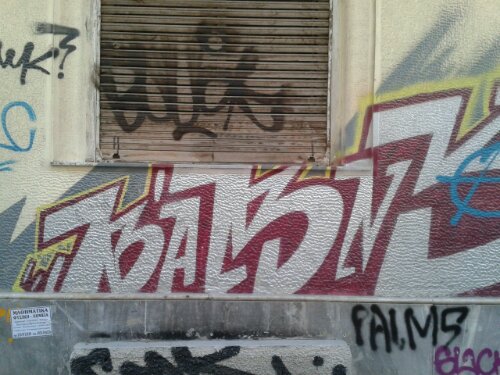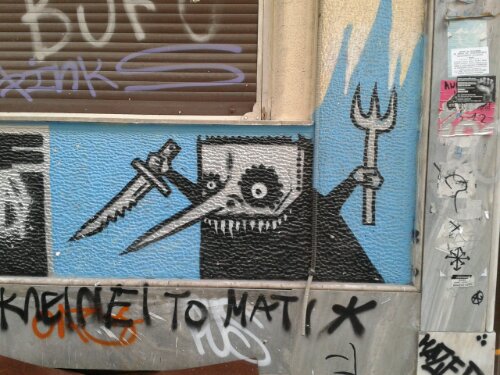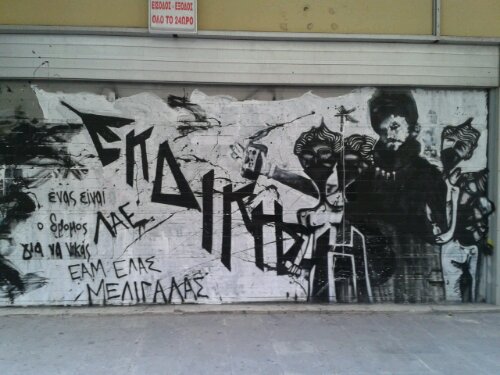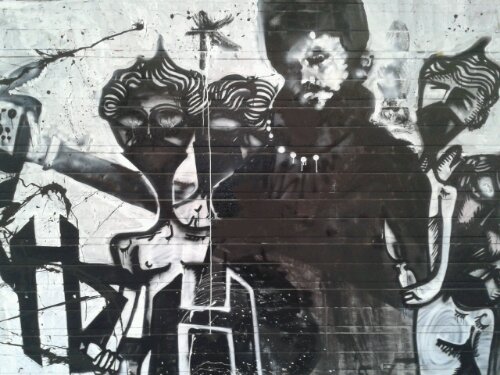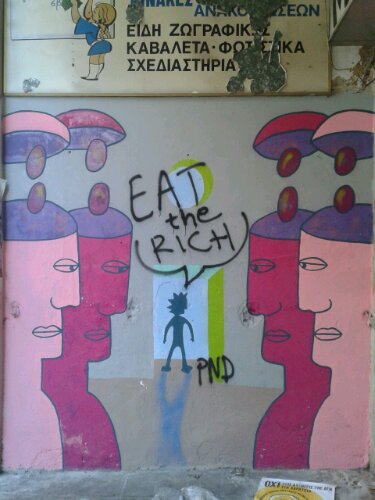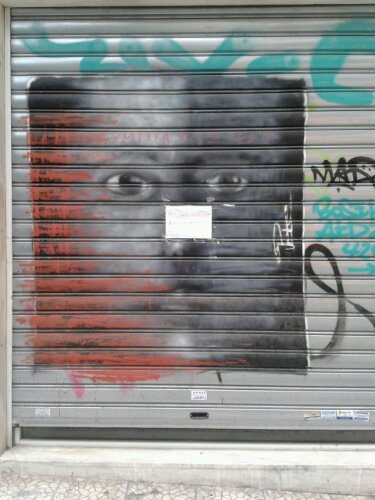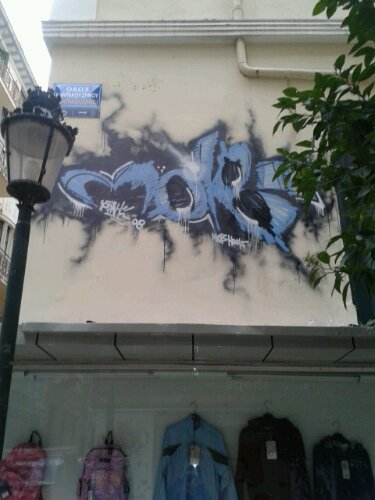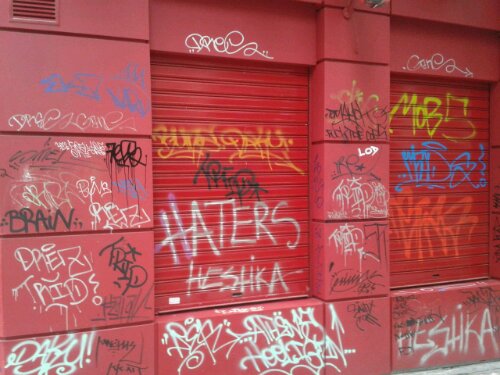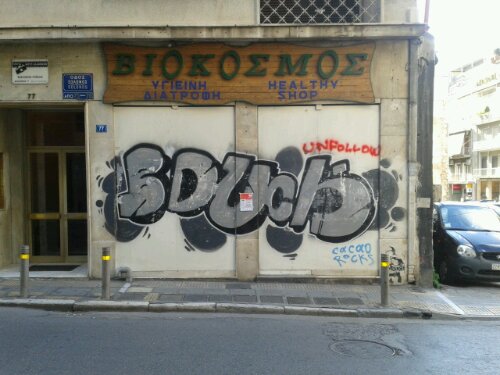by Simon Sellars
This is an earlier version of an article published in Continuum, Volume 24, Issue 5 October 2010, pages 721-33. Both versions were based on a paper given by Simon Sellars at the Monash University conference, B for bad cinema: aesthetics, politics and cultural value.

Recent academic discussions of ‘badfilm’ and ‘paracinema’ have highlighted the re-appraisal of ‘all forms of “cinematic trash”’ (Sconce 1995, 372). This article addresses the theme by contrasting films from two of the most well-known purveyors of ‘cinematic trash’: X: The Man with the X-Ray Eyes (1963), directed by Roger Corman, and They Live (1988), directed by John Carpenter. In X, a scientist develops X-ray vision, seeing into the fourth dimension and something so shocking he rips his eyes out. This act is analogous with Corman’s career as purveyor of trash cinema: refraining from pushing badfilm’s power to the absolute limit; foregoing the gift of ‘second sight’; content to exist on a marginalised, second-tier, parallel reality to the Hollywood mainstream. In They Live, Carpenter re-empowers the thesis: the hero stumbles on a secret society that has developed sunglasses to see through the real to the alien-generated subliminal messages in advertising and politics. Rather than withdrawal, Carpenter’s hero declares: ‘I have come here to chew bubblegum and kick ass – and I’m all out of bubblegum’. Unabashed, glorying in his outsider status, Carpenter reappropriates Hollywood values in a cheap ‘bubblegum’ universe, deploying trash culture as a smart bomb that aims to prise apart not only cinematic convention but also reality itself.
Ultimately, both films, in very different historical specificities, and linked by the work of J.G. Ballard, offer up the B-movie as a response to the gathering global and economic forces of late capitalism, signified by what Slavoj Žižek identifies as the ‘ideological state apparatus’ of the Hollywood movie-making machine (2002).
ROGER CORMAN: THE ‘X EFFECT’

Still from X.
Roger Corman, known as the ‘King of the Bs’, was a force of nature. An undeniably intelligent and daring filmmaker, more often than not he seemed a hyper-manic combination of accountant, adrenalin junky and huckster than a maverick artist with a vision. Reminiscing about an early script, he said: ‘I told [the production company] I would give them the film if they would give me all of my money back immediately as an advance against distribution and I would do the same thing on three more films, so I could set myself up as producer’ (Emery 2003, 120). He even seemed in competition with himself: ‘I did Bucket of Blood in five days and … Little Shop of Horrors in two days and a night, but that was really an experiment and a joke to see if I could do it’ (Emery 2003, 121). In 1963, Corman completed The Terror in three days on sets leftover from The Raven, also from 1963. That year, too, he somehow found the energy to direct X: The Man with the X-Ray Eyes, with its portrayal of Dr James Xavier, who experiments on his own eyes with a super-powerful X-ray serum. The ‘X-effect’ is exponential as Xavier begins to see through more and more layers of reality: right through his eyelids and beyond, then through walls and buildings. When he sees through a sick girl’s skin to discover a malignancy her operating doctor has missed, Xavier disables the doctor by cutting his hand and performing the operation himself, saving the girl’s life. Facing a subsequent malpractice suit, the funding for his experiments is cut. Feverish from the X-effect and sleeplessness, his grip on sanity worsens and he lashes out at a colleague, inadvertently pushing him out of an upper-floor window to his death.
Xavier hides out in a backwaters town. Under thrall to a manipulative carnival hustler, he performs circus tricks as a sideshow ‘mind reader’ (in actuality, he reads people’s ID cards through their clothing). Needing money to progress his experiments, he follows the hustler to another anonymous, small town, where, in a distortion of his former life, he looks through sick people’s skin to identify diseased internal organs. He then provides a diagnosis to the victim, who, having abandoned hope, is grateful and willing to reward him. Of course, he must hand over a cut to the hustler, becoming ever more embittered as a result.
Another colleague finds him and Xavier escapes with her. His observations become increasingly deranged: ‘I see the city as if it were unborn … Limbs without flesh, girders without stone, signs hanging without supports, wires dipping and swaying without poles … flesh dissolved in an acid of light: a city of the dead’. Wearing modified sunglasses, with a thickness that retards the X effect to some extent, he works a Las Vegas casino, winning money by seeing through card decks and slot machines. However, when his sunglasses fall off, his horribly blackened eyes are revealed to the crowd and he flees to the desert, stumbling across a religious revival tent complete with blood-and-thunder preacher. Now he has begun to see through the final layers of reality and into the heart of the universe. Recoiling in horror, Xavier addresses the preacher: ‘I’ve come to tell you what I see. There are great darknesses, and beyond the darkness, a light that glows. And in the centre of the universe: the eye that sees us all.’ The preacher exhorts: ‘You see sin and the devil! But the bible tells us what to do: if thine eye offends thee, pluck it out!’ Xavier, unable to bear the burden of seeing what no one has seen before, takes the advice and gouges out his own eyeballs.

Still from X.
There have been many interpretations of the film. Ann Reynolds sees Xavier’s condition as a cinematic corollary of Robert Smithson’s ‘ruins in reverse’, symbolising the illusory hopes of future utopias (Reynolds 2003, 116). For Akira Mizuta Lippit, Xavier’s experiments invoke ‘the nuclear age, a premonition of total catastrophe destined to follow’ (Lippit 2005, 145). But in this act of self-immolation – Xavier putting out his eyes rather than trusting the perceptual logic he has set in train[1] – there seems an even clearer analogy: namely, with Corman’s directing career. In 1961, Corman made The Intruder, which dealt with small-town racism. This raw, uncompromising film garnered excellent reviews yet failed to make money. Subsequently, ‘after [this] financial disaster … Corman never again forgot the importance of the bottom line’ (Dixon 2005). His films from then on would be designed to make money first and foremost, with ‘art’ and ‘worthiness’ as secondary commodities. In his autobiography, he even devotes an entire chapter to the ‘disaster’ that in his mind was The Intruder, an act of pathos according to William D. Routt: ‘What was the big artistic “risk” here? Apparently, as it turns out, it was Corman’s sense of personal self-worth. Yet here, as the details of financial risk are spelled out, what seems significant is risk itself, a nameless danger that posits the film maker as One against the Rest: art as a specific, fraught enterprise’ (Routt 1994, 57).
This moment of realisation reached its apex when Corman founded his production company, New World Pictures, in 1970. He would not direct another film for 20 years, [2] an absence clarified by this 1974 announcement: ‘my earlier theories of the director as auteur are undergoing some revision and I’m beginning to think the producer is more important than the director’ (Morris 2000). For Charles Griffith, screenwriter on Little Shop of Horrors (1960), such an outcome was assured insofar as Corman ‘uses half his genius to degrade his own work, and the rest to degrade the artists who work for him’ (Griffith in Gray 2000). Although Corman had given up directing himself, he still wielded power over New World’s staff directors. According to Paul Bartel, once filming had started on Bartel’s Death Race 2000 (1975), Corman excised much of the black humour in the original cut, replacing it with excessive gore and positioning it as a knock-off of Norman Jewison’s blockbuster, Rollerball, from the same year. As Bartel observed: ‘It was very important to him to be the David against the studio Goliath, and to come up with a cheap version that could be marketed along the same lines as some megaproduction’ (Gray 2000, 121). For Joe Dante, another Corman protégé, Death Race 2000 was ‘a real pop-art masterpiece before Roger got to it’ (Gray 2004, 121). Inadvertently, Corman’s autobiography confirms this angle. His account of the creative process surrounding Death Race 2000 is told entirely from his own perspective; Bartel and the screenwriters are barely mentioned: ‘When I read the story,’ Corman writes, ‘I thought: You can’t do this as a straight and serious film’ (Corman and Jerome 1990, 205).[3]
There is no small irony at this fate befalling Corman, whose forsaking of edgy, independent drama (typified by The Intruder) for cheap, moneymaking thrills, while running roughshod over colleagues, echoes that of Xavier. After all, the scientist was finally on the verge of a major metaphysical breakthrough only to succumb to fatal hubris. Destroying his talent, he subsists by performing cheap carnival tricks solely to raise cash before eventually rendering himself blind – literally, but also metaphorically blind to those around him.[4] Again, Corman’s autobiography hints at a literal act of self-sabotage. Reflecting on his enforced layoff from directing, Corman asks himself:
‘Did I quit out of fear? Did I let myself get wrapped up in the business of New World so I wouldn’t have to confront any insecurities I may have had about my worth as an artist, as an auteur? … Was New World a way for me to remain master of my own limited universe and reject a mainstream system that would only compromise my creative freedom and financial autonomy?’ (Corman and Jerome 1990, 231)
Today, he has pushed this logic to its bitter end: Corman’s latest productions are virtually unwatchable, a view held by detractors and admirers alike. Winston Wheeler Dixon, an avowed fan, voices the consensus:
‘These later films are extremely problematic … they are all but invisible to the public, being released solely through US cable networks, or on straight-to-home-video deals… [Their] excessive … sex and violence … makes many … uncomfortable …. [They] seem devoid of any artistic impulse whatsoever, designed solely to make money.’ (Dixon 2005)
In fighting such a longstanding resistance war against Hollywood, indeed against his own talent, Corman has marginalised himself out of existence, victim of a system that today fights back in very different ways – with absorption. As the novelist J.G. Ballard cogently observes: ‘the time span between the Rebel – the Revolution – and Total Social Acceptance is getting shorter and shorter …. In the future (this is part of the problem in the arts as well) you’ll get some radical new idea, but within 3 minutes it’s totally accepted, and it’s coming out in … your local supermarket.’ (Ballard in Savage 1978, 107).
Thus, Corman’s later work, defiantly yet ineffectually schlocky, is decidedly out of step when appropriated by a Hollywood simulacrum that has not only successfully mimicked exploitation values, but also, as Greg Villepique notes, Corman himself:
‘[Before] Jaws and Star Wars … studios allotted big budgets to historical epics and character-driven dramas while tossing off exploitation films on the cheap, so Corman was at least competing in the same ballpark as the majors (albeit from left field). Since the mid-70s, the studios’ priorities have flipped and they’ve poured all their resources into aping, with far more polish, Corman’s audience-pleasing strategies – tongue-in-cheek, $100 million Arnold Schwarzenegger and Will Smith blow ’em-ups that simply out-Corman Corman.’ (Villepique 2000)
In a world of commodity fetishism, where the lag between radicalism and flaccid cliché becomes negligible, what space can the ‘rebel’ hope to occupy?
JOHN CARPENTER: THE ‘X Continuum’

Still from They Live.
They Live begins as a sombre affair. John Nada, a humble working-class drifter, needs a job and a place to sleep. Finding work on a construction site, he is offered a bed in a shantytown. He becomes intrigued by a nearby church and sneaks inside, overhearing a resistance group bent on bringing down the government. Later, the police discover the shantytown, bulldozing it and arresting the freedom fighters. Nada returns to the now-empty church, finding a box of sunglasses left behind…
Read the whole text
Taken from ballardian.com/



